Zoo Frankfurt
KfW Stiftung continues the work started by KfW Group in 2011 – supporting the Frankfurt Zoo.
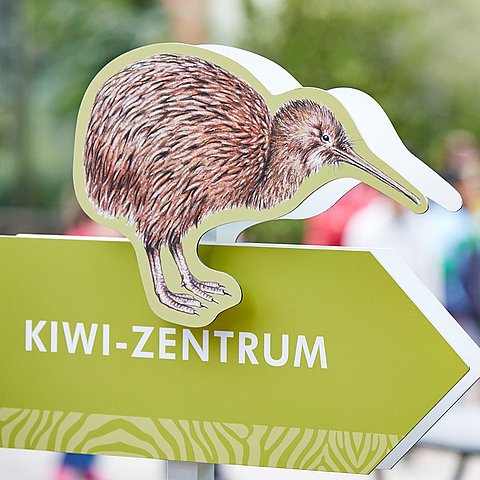
Our aid aims to expand and improve the zoo's educational and information programmes for all groups of visitors to the zoo, thus helping to raise awareness for issues related to nature protection and the preservation of biodiversity.
Funding is provided for five projects, which are going to be set up in a joint effort over the next years and include information systems for the penguin compound as well as an information point on kiwis. Kiwis are endemic to New Zealand's northern island. Only few kiwis can be found outside their native habitat. The information point will allow everyone a glance into the kiwi world.
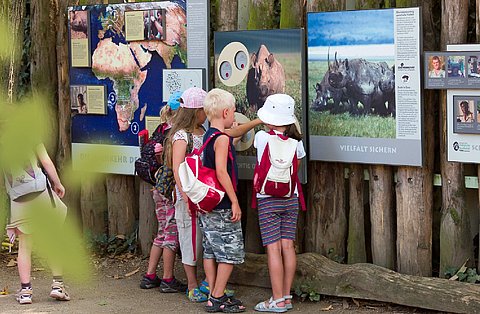
Penguin Facility
In May 2019 the new penguin facility of Frankfurt Zoo was opened after two and a half years of construction. The facility offers a new home to a Humboldt penguin colony of 30 to 40 breeding pairs through a modern and natural environment appropriate to the species. The endangered birds which live along the Pacific coast of northern Chile and Peru cope with the climate of Frankfurt very well which allows them to stay in the outside facilities for the entire year.
KfW Stiftung has supported the zoo pedagogics’ development of interactive boards and models which complete the facility with diverse information about the Humboldt penguins and their natural environment in an easy and delightful way. This allows the zoo visitors an exciting insight into the penguins’ world in addition to watching the animals. A very impressive detail, the visitor can learn there, is the fact that the penguins’ stomach amounts to up to one third of their body weight. This enables them to hunt for reserves.
Also, the educational installation draws attention to the causes of the species' endangerment and hands out some advice about how we as humans, the greatest danger to the Humboldt penguins, can protect them better.
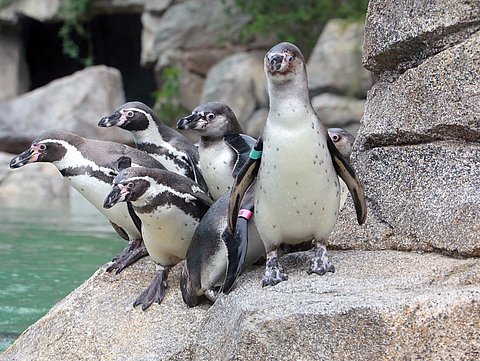
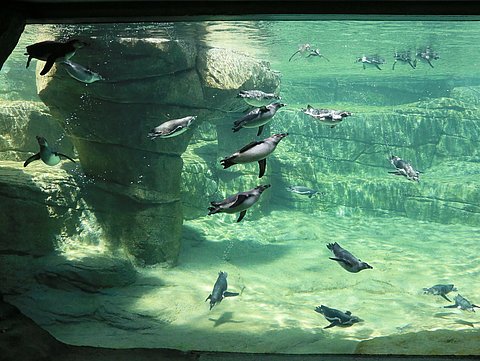
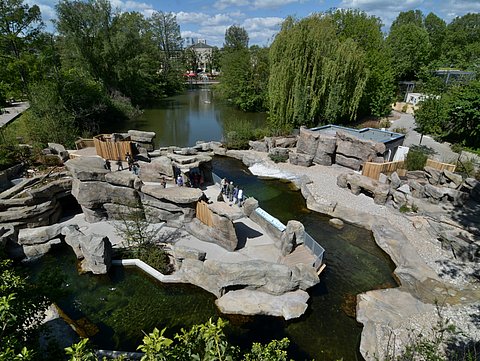
The new information system in the nocturnal house
Why are some animals active at night? How does diurnal and nocturnal activity increase the diversity of a wildlife habitat? Which senses do you need for a life in darkness? What effects does light pollution have on our environment?
The new information system in the nocturnal house at the Frankfurt Zoo provides graphic and exciting answers to these and even more questions. Ten new interactive information points, funded by KfW Stiftung, were installed in December 2016. During their tour of the house, visitors can discover the world of night monkeys, aardvarks and many others – the day/night cycle is reversed here. Animated cartoons, film clips, quizzes as well as original specimens of insects and animal skulls are used to present the information in an educational and fascinating way. The new system is designed to make the Grzimekhaus, the home of the nocturnal animals, built in 1978, not only more interesting, but also to raise awareness among visitors of the needs of nocturnal animals.
GEO Biodiversity Day – Zoo school
On the occasion of the 55th anniversary of the zoo school, KfW Stiftung is offering support to the zoo for redecoration and modernisation.
Apart from expanding the facilities, the topics of Great Apes, Predators and Jungle Animals were introduced as new educational focus areas. A specific learning programme for preschool children has been developed that offers education at a very young age and makes the children’s trip to the zoo a highly special experience. Raising awareness for, and learning about, nature is particularly important for young people as this has a lasting effect on their environmental stance: we only protect what we know and understand.
The zoo school in Frankfurt was founded by the former director of the zoo, Professor Bernhard Grzimek, who had the idea that the animals in the zoo should be used for educational purposes. While similar institutions were already in existence in the US and in Moscow, it was the first zoo school to be set up in mainland Europe. This idea proved to be very effective as zoo schools have become the norm today.
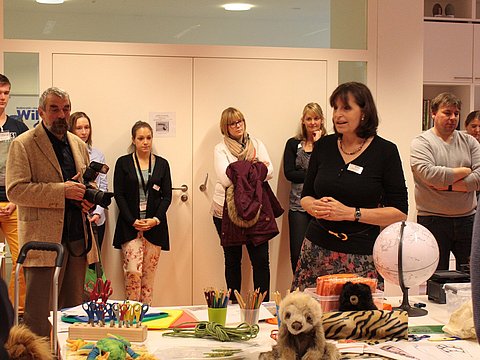
Kiwi Centre
Kiwis are flightless birds with nostrils at the tip of their long beaks. Frankfurt Zoo has bred them successfully since 1987. However, hardly anyone has paid any attention to them. In the zoo, the sensitive national icon of New Zealand has so far lived behind the scenes. From now on, the Kiwi Centre gives everyone the opportunity to find out why this animal has led such an inconspicuous life and what makes the nocturnal bird so exceptional.
Since the public cannot see the timid, nocturnal kiwis in the zoo, the hatchery will be transformed into a "window to the kiwi world". Besides providing exciting information, the Kiwi Centre will help visitors understand how a modern, scientifically managed zoo is run. Exhibits, models and films convey a vivid impression of the kiwis. A big window overlooking the kiwi breeding station will deliver additional insight into the birds' nursery ground whenever the zookeepers weigh and measure the baby animals.

Programme Management
Pia Puljanic
Photo credits:
01. Image: Source: KfW Stiftung, Author / Photographer: Jens Steingässer
02. Image: Source: Zoo Frankfurt, Author / Photographer: Michael Leibfritz
03. Image: Source: KfW Stiftung, Author / Photographer: Pia Puljanic
04. Image: Source: KfW Stiftung, Author / Photographer: Pia Puljanic
05. Image: Source: ZGF; Author / Photographer: Matthias Besant
06. Image: Source: ZGF; Author / Photographer: Matthias Besant
07. Image: Source: ZGF; Author / Photographer: Zoo Frankfurt
08. Image: Source: KfW Stiftung, Author / Photographer: Pia Puljanic
09. Image: Source: Zoo Frankfurt, Author / Photographer: Christine Kurrle
10. Image: Source: KfW Stiftung, Author / Photographer: Jens Steingässer